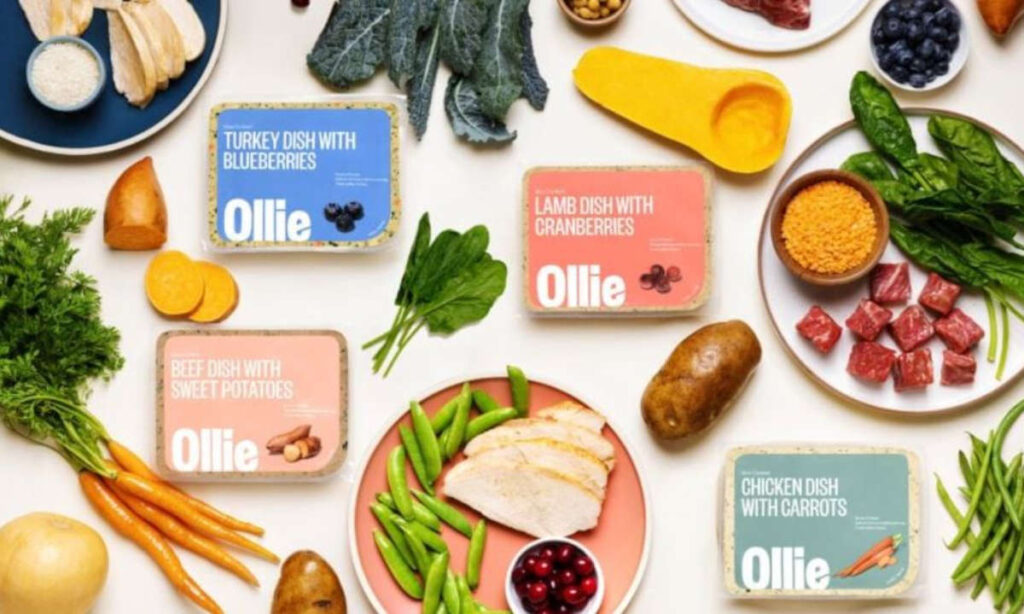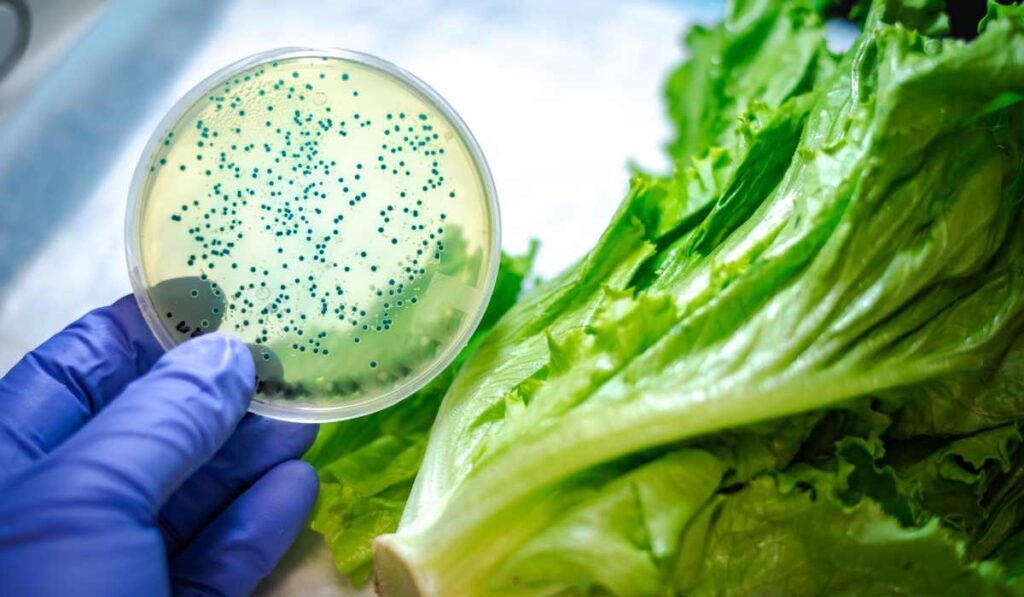As the pet food industry evolves, dog owners are continuously seeking the best dietary options for their furry companions.
Enter Ollie, one of the USA’s leading fresh dog food brands, capturing the hearts of countless pet owners. But a pivotal question remains: “Does Ollie dog food have to be refrigerated?” Dive into this guide, and we’ll demystify every aspect of this pressing query.
The Rise of Fresh Dog Food
America’s love for dogs is no secret. From bustling cities to tranquil suburbs, our furry friends have found a special place in our homes and hearts. Consequently, we, as dog parents, only want the best for them, especially when it comes to their food.
In recent years, fresh dog food brands like Ollie have gained immense traction, touting high-quality ingredients and unmatched freshness. But with this freshness comes responsibility.
As we explore the nuances of Ollie dog food, one thing becomes clear – proper storage is paramount.

Is Refrigeration Required for Ollie Dog Food?
Yes, Ollie dog food does need to be refrigerated. Once you receive your Ollie shipment, the food packs should be stored in the freezer. Before feeding your dog, you’ll need to thaw the food pack in the refrigerator for about 24 hours. The food is designed to be kept frozen and only thawed as needed to maintain freshness.
Once a food pack is opened, it should be used within four days, and during this time, it must be stored in the refrigerator. Ollie provides resealable packs and an airtight container, often referred to as a “puptainer,” to help store the opened food properly in the fridge.
This refrigeration requirement is due to the fresh, minimally processed nature of Ollie’s dog food, which doesn’t contain preservatives that would allow it to be stored at room temperature for extended periods. Keeping the food refrigerated ensures that it stays fresh and safe for your dog to eat
Refrigeration: A Fresh Food’s Best Friend
Freshness, while immensely appealing, comes with its own set of challenges. In the realm of food—whether for humans or our pets—freshness signifies a lack of artificial preservatives, making the proper storage of such products crucial.
When we think of fresh items, a salad might come to mind. Crisp lettuce, juicy tomatoes, and a myriad of other vegetables that, without the cool embrace of a refrigerator, wilt and lose their appeal in mere hours.
Similarly, Ollie’s dog food, with its emphasis on freshness, demands particular attention to its storage. Let’s delve deeper into the reasons behind this.

1. Safety First: The Crucial Role of Refrigeration
Ollie prides itself on its premium, all-natural ingredients. These ingredients, while being of the highest quality, are also devoid of the preservatives commonly found in many traditional dog foods.
Why does this matter?
- Bacterial Growth: Much like our food, the absence of preservatives means there’s a potential risk of bacterial growth. Bacteria thrive in warmer temperatures, and certain harmful microbes can multiply at alarming rates, posing health risks. Refrigeration significantly slows down this growth, ensuring that each serving of Ollie dog food remains as safe as the moment it was packed.
- Spoilage: Beyond bacterial concerns, spoilage is another factor. Fresh ingredients have moisture, and in warmer settings, this moisture can lead to mold growth and other signs of spoilage, making the food unfit for consumption.

2. Preserving the Nutritional Bounty
Ollie’s commitment to providing a nutritious meal for dogs is evident in every bite. However, the integrity of these nutrients can be compromised if not stored correctly.
- Nutrient Degradation: Vitamins and minerals, especially certain water-soluble vitamins like vitamin C, are susceptible to degradation over time. Exposure to light, air, and warmer temperatures can accelerate this process, stripping the food of its beneficial properties.
- Oxidation: Fats and oils in the food can undergo oxidation if not stored properly. This not only compromises the taste but can also reduce the food’s nutritional value. Cool temperatures in a refrigerator can significantly slow down this process.
- Texture and Palatability: Beyond nutrition, the texture of the food plays a vital role in its palatability. Proper refrigeration ensures that Ollie dog food retains its intended consistency, making it appealing for dogs at each serving.
In essence, while Ollie dog food offers a fresh, nutritious alternative to many traditional options, it comes with the responsibility of proper storage. By understanding the crucial role refrigeration plays, pet owners can ensure that their dogs reap the full benefits of this gourmet meal, bite after bite.
Storing Ollie: Tips and Tricks for Maximum Freshness
So, you’ve got your first batch of Ollie dog food. Now what? Here’s how to keep it at its best:
- Always in the Fridge: Upon arrival, place the packs in the refrigerator. This ensures they remain fresh and appetizing.
- Shelf Life: When refrigerated, Ollie dog food maintains its freshness for the duration specified on its packaging. Always check the best-before date!
- Freezing Ollie: Bulk buyers, rejoice! You can freeze Ollie dog food. It extends the food’s life, making it a handy option for those who buy in large quantities.
- Serving Post-Refrigeration: Thaw, portion, and serve. Remember to never re-freeze thawed food.
Spotting The Signs: When Fresh Turns Foul
While Ollie dog food is crafted for longevity, it’s essential to recognize when it’s past its prime:
- Placement: Always store Ollie packs at the back of your fridge where temperatures are most consistent.
- Odor & Texture: If the food smells off or its texture seems amiss, it’s best to discard it.
- Opened vs. Unopened: Once opened, consume the contents within the recommended timeframe, typically faster than an unopened pack.
Frequently Asked Queries: Navigating the Ollie Experience
Q: How long can Ollie dog food stay out of the refrigerator?
Short periods are fine, like during feeding, but extended periods risk spoilage. Always return unused portions to the fridge promptly.
Q: Can I mix Ollie with other dog foods?
Absolutely! Just ensure the other food is stored and served as per its guidelines.
Q: Taste & Texture Changes Post Refrigeration: Myth or Reality?
Refrigeration can slightly alter the texture, but most dogs don’t mind. As for taste, the nutritious goodness remains consistent.
Understanding Ollie: Not Just Another Dog Food
At its core, Ollie dog food stands apart due to its emphasis on natural ingredients. Think of it as a gourmet meal, but for dogs. Free from preservatives, each packet promises a nutritious and tasty feast.
Their mission isn’t just to feed, but to nourish. And the growing American audience for Ollie is testament to their success.
Conclusion: Freshness, A Commitment
When we ask, “Does Ollie dog food have to be refrigerated?“, we’re truly asking, “How do we give our dogs the best?” The answer is clear: by respecting the craft that goes into each packet of Ollie dog food. By ensuring proper storage, we honor the brand’s commitment to freshness and quality, guaranteeing our dogs enjoy the very best at every meal.
Remember, with great food comes great responsibility. Here’s to happier, healthier dogs, one refrigerated packet at a time!
Note: While this article is a guide, always consult Ollie’s official guidelines or consult with a vet for specific concerns.
With this detailed guide, readers will have a comprehensive understanding of the importance of refrigerating Ollie dog food, ensuring they provide the best care and nutrition to their pets.
Read also:



0 Comments